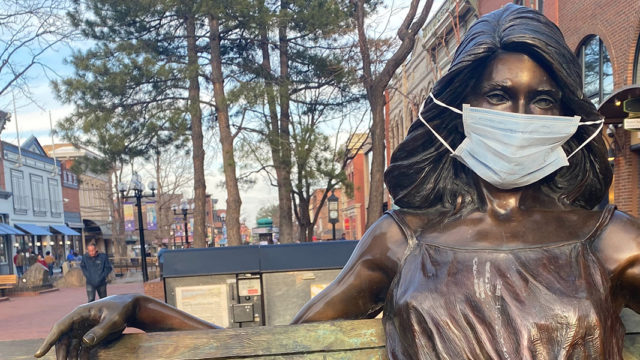Every day, students and researchers at CU Boulder conduct research, test hypotheses and develop insights in Front Range habitats that uncover new understandings, thanks, in part, to its diverse elevational gradients in such a compact area. In this piece, we dive into McCain’s Mountain Lab at the university, and its research on Front Range alpine carrion beetles, which may contain deep insights into how the earth’s changing climate affects biodiversity.

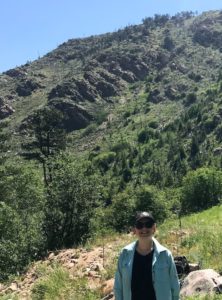
The Front Range is condensed enough to show researchers interacting communities, but has intense climate and habitat variability at different altitudes for researchers to study diverse animal and insect species. Fourth-year Ph.D. student Chloe Garfinkel, a researcher at CU’s Mountain Lab, leads fieldwork on which of Colorado’s 15 carrion beetle species can be found closest to campus, with help from Dr. Christy McCain, who has researched carrion beetles for over a decade.
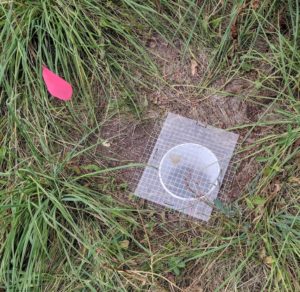
Chloe’s early mornings checking carrion beetle traps extend into the afternoon, mostly due to driving time between five sites at varying elevations. The lowest, in Lefthand Canyon, sits at 1,790 meters, the highest in Ward at 2,900 meters.
Twice weekly, Chloe checks every site, where she collects from and resets five traps within a few hundred feet of each other. She refills bucket traps to rid them of what she calls “chicken mud,” a square-inch of raw chicken as beetle bait, mixed with mud and melted by the sun.
Back in Christy’s Mountain Lab, Chloe records the species found in each bucket trap, as well as the upper and lower thermal temperatures at which the beetles stop moving. She analyzes this data to see how species’ differences in elevation affect their abundance and thermal tolerances.
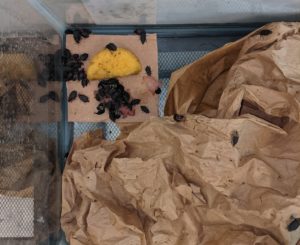
Christy and Chloe want to see if climate change impacts the diverse habitats on the Front Range, especially since many elevational biodiversity studies focus on vertebrates. Fewer researchers study invertebrates like beetles in the Rocky Mountains, of which Chloe and Christy found have the most diverse populations at middle elevations.
Year-to-year, Chloe’s data varies in which carrion beetle species spikes. For example, one carrion beetle abundant in the past two years had a low turnout this season. Because Chloe records climate, habitat and vegetation data at every collection site, she expects future analysis on how global temperature change affects the beetles. If beetle populations start dwindling at lower elevations and increasing higher up, we might conclude global warming forces them to greater altitudes.
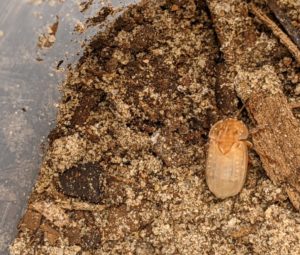
“They seem like they’re handling climate change well,” Chloe says. “They’re a great study organism to think about coexistence, and they have a great elevational range.”
Though Christy has her own carrion beetle data to compare with Chloe’s from years ago, she had fewer resources than she provides Chloe with now and may have under-sampled. Christy started her lab after moving to Boulder in 2007 and now passes on her data, the most comprehensive to-date on the Front Range, and love for carrion beetles to students like Chloe.
Christy thinks carrion beetles are the coolest biology form and objectively the most diverse organism on the planet, other than viruses and microbes. Chloe appreciates their personality quirks. “All the species have their own escape artistry tactics,” Chloe says. She can often tell what species she’s holding by how it moves. “Some are gentle, some are big biters.”
Mammals moving up
In January, Christy’s lab released a paper comparing today’s mammal diversity to an earlier era of climate change (1979) by using specimen data from CU’s collection, as well as that on Colorado specimens from museums around the western U.S.
After a decade analyzing 47 species’ elevational ranges in the San Juan Mountains and the Front Range to Rocky Mountain National Park, the results surprised Christy.
“In general, mammals are moving to higher elevations, particularly small animals like shrews, mice and marmots,” she says. These shrews and rodents are moving 120 to 150 meters higher up the mountains, a substantial increase. Mid-to-high elevation alpine mammal species are shifting, on average, 350 meters higher on the Front Range and in the San Juan Mountains. Just by observing the abundant animals in her field work, Christy wouldn’t have guessed this outcome.
All about that carrion
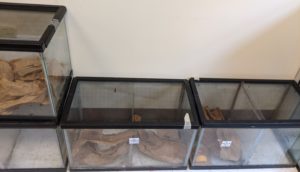
Because carrion beetles are found at such a large range of elevations, 1,700 to nearly 3,000 meters, and are easy to test in the lab because of their small size, Christy hopes to someday extrapolate their findings to other species. On top of their unique testing ability, carrion beetles pair mate, feed their offspring and share food with other mates, all features rare in insects.
After collecting from and resetting her traps every week, Chloe breeds carrion beetles in the lab to see if their thermal tolerances are due to genetics or are flexible based on where they’re reared, and uniquely so.
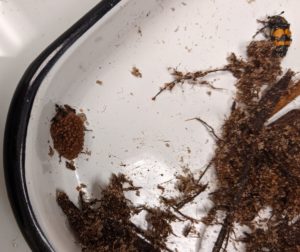
Ten of Colorado’s 15 carrion beetle species feed on, as their name suggests, smaller animal carcusses like mice, shrews and snakes. The first beetle to arrive at a dead animal emits pheromones, attracting a mate. When the mate answers the call, they wiggle their bodies underneath the carcass and, feet in the air, lift and move it to a rich-soil spot.
There, they dig and bury the carcass, build an underground cave around it, lay their eggs and make themselves at home. They feed their larvae from the dead animal and stay with their young until they can feed on their own, and everyone leaves as adults.
If, near the start of this laborious process, the mating beetles can’t move the small carrion, they’ll wait for another insect species to come along and help them drag the body. They two mates, knowing there’s enough food for both broods, don’t “co-parent,” and will sometimes eat the other brood. Sometimes they will live in harmony at separate ends of the carcass.
Carrion beetles’ uncommon sharing and parenting abilities are just some of the reasons Christy and Chloe have studied the insect for so long. “People might be more interested in climate change for mammals than some beetle they’ve never seen,” Christy says, but that doesn’t mean the carrion beetle isn’t telling in its own way.


